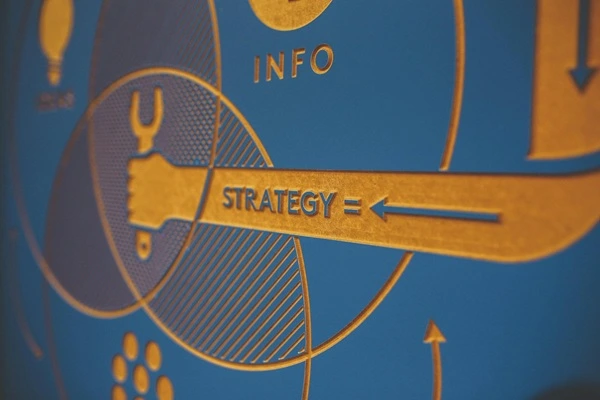Marketing and sales techniques are the backbone of any successful business, but achieving seamless coordination between these two functions can be challenging. When implemented effectively, these techniques not only increase revenue but also enhance customer experience, build brand authority, and drive long-term business success.
Let’s explore some of the most effective marketing and sales techniques to drive business growth.
Does Offering an Excellent Product or Service Guarantee Success?
Not necessarily!
Many business owners assume that having a high-quality product or service is enough to generate sales. However, for customers to choose your business, they need to:
- Be aware that your product or service exists.
- Understand its features and benefits.
- Recognize why it stands out from the competition.
Marketing plays a crucial role in creating this awareness, while sales teams work to convert interest into action. The most successful businesses ensure that these teams collaborate closely, sharing insights and strategies to optimize results.
What is Marketing?
Marketing involves a set of activities and strategies designed to attract, engage, and retain customers by delivering value and promoting brand visibility.
What is Sales?
Sales is the process of converting leads into paying customers by directly offering a product or service in exchange for money. While marketing generates demand, sales capitalize on that demand to drive business revenue.
Why Are Marketing and Sales Alignment Important?
Businesses that successfully align their marketing and sales teams experience:
- Over 200% revenue growth due to improved collaboration.
- A 38% increase in sales through integrated strategies.
- A 36% boost in customer retention, leading to long-term success.
- A 30% reduction in customer acquisition costs, making marketing efforts more cost-effective.
- A 20% increase in customer lifetime value, ensuring greater profitability.
The key to business growth lies in synchronizing these functions for maximum impact.
Top Marketing and Sales Techniques for Growth
1. Understand Your Market and Audience
Instead of solely focusing on products or services, businesses must prioritize understanding customer needs, behaviors, and pain points. Conduct thorough market research, analyze buying patterns, and monitor competitors to refine your marketing approach.
2. Set Clear Business Goals
A well-defined marketing and sales strategy should align with specific business objectives. Understanding your target audience and value proposition ensures consistent messaging and more effective campaigns.
3. Leverage Your Resources Wisely
Evaluate your team’s skills, expertise, and tools:
- Do your sales professionals have the necessary training?
- Is your marketing team using the best engagement strategies?
- Are you investing in the right technology and automation tools?
Optimizing resources enhances efficiency and drives better outcomes.
4. Personalize the Customer Experience
Consumers are more likely to engage with brands that tailor their interactions. Personalization can include:
- Recommending products based on past behavior.
- Sending customized email offers.
- Creating targeted content that speaks directly to customer interests.
5. Use Customer Reviews and Testimonials
Social proof significantly impacts purchasing decisions:
- 84% of consumers trust online reviews as much as personal recommendations.
- 90% of shoppers read at least 10 reviews before making a purchase.
- 74% of consumers say positive reviews increase brand trust.
Encouraging happy customers to share their experiences builds credibility and attracts new clients.
6. Establish a Strong Presence Across Multiple Channels
A common mistake businesses make is assuming their audience will find them. Instead, companies must proactively engage potential customers across platforms, including social media, email marketing, search engines, and content marketing.
7. Create High-Quality, Engaging Content
Content marketing is a powerful tool for brand awareness and lead generation. Businesses should leverage various content formats, including:
- Infographics and visual storytelling.
- Blogs and articles.
- Video marketing.

Investing in SEO (Search Engine Optimization) ensures that content is discoverable online. Without SEO, even the best content may go unnoticed.
8. Develop a Memorable Brand Message
Storytelling fosters emotional connections with consumers, making a brand more relatable. Instead of relying solely on direct advertising, businesses should craft compelling narratives that resonate with their audience.
9. Optimize User Experience (UX)
A slow or difficult-to-navigate website can drive potential customers away. Businesses should regularly analyze and enhance website performance to ensure a seamless user experience and maximize conversions.
10. Align Strategies with the Customer Journey
Modern consumers follow non-linear buying paths. Businesses must:
- Address questions at every stage of the purchasing process.
- Provide relevant content to guide decision-making.
- Offer personalized solutions rather than generic sales pitches.
Unlock Growth with a Strategic Approach
Implementing these marketing and sales techniques can significantly enhance business performance, increase customer engagement, and drive long-term success. However, growth doesn’t happen in isolation—it requires visibility, authority, and expert marketing execution.
At Amaranth Trade & Marketing Agency, we specialize in authority marketing and SEO to help businesses stand out. Whether you want to be featured in Amaranth Magazine to boost credibility or partner with us for a customized marketing strategy, we have the expertise to elevate your brand.
📢 Contact us today and accelerate your business growth!


